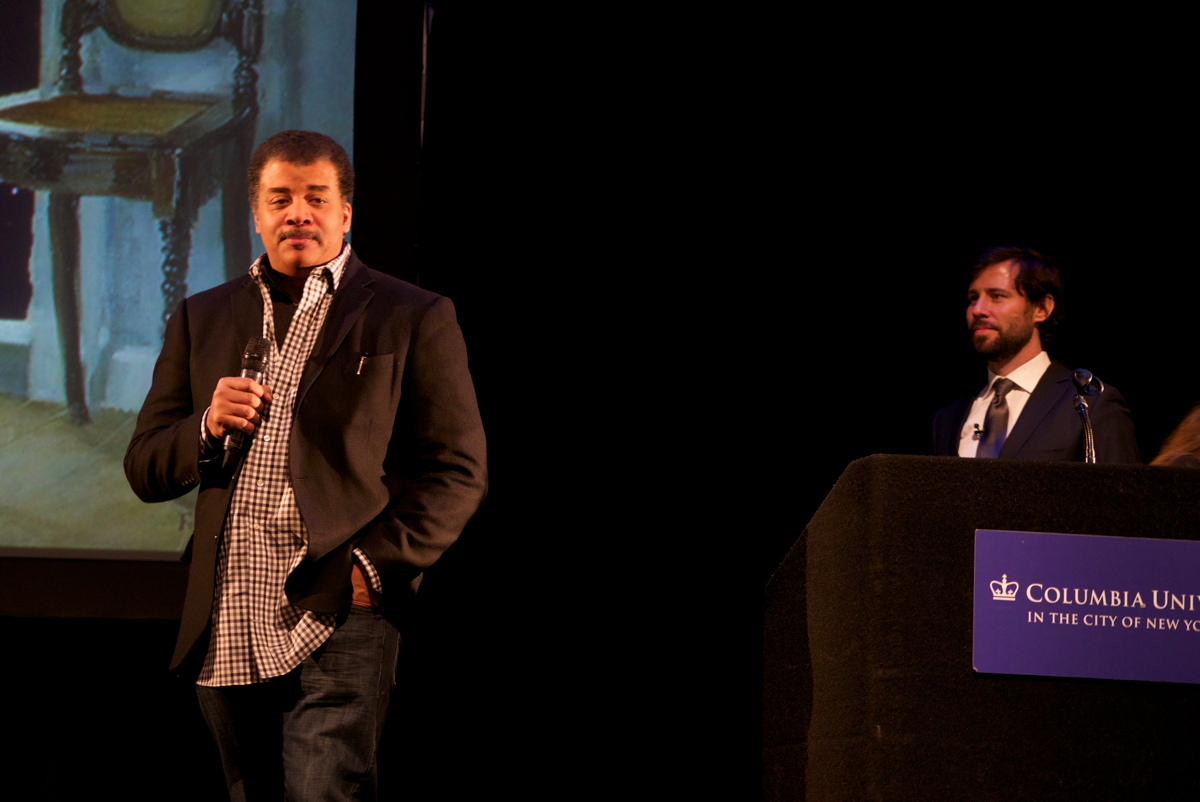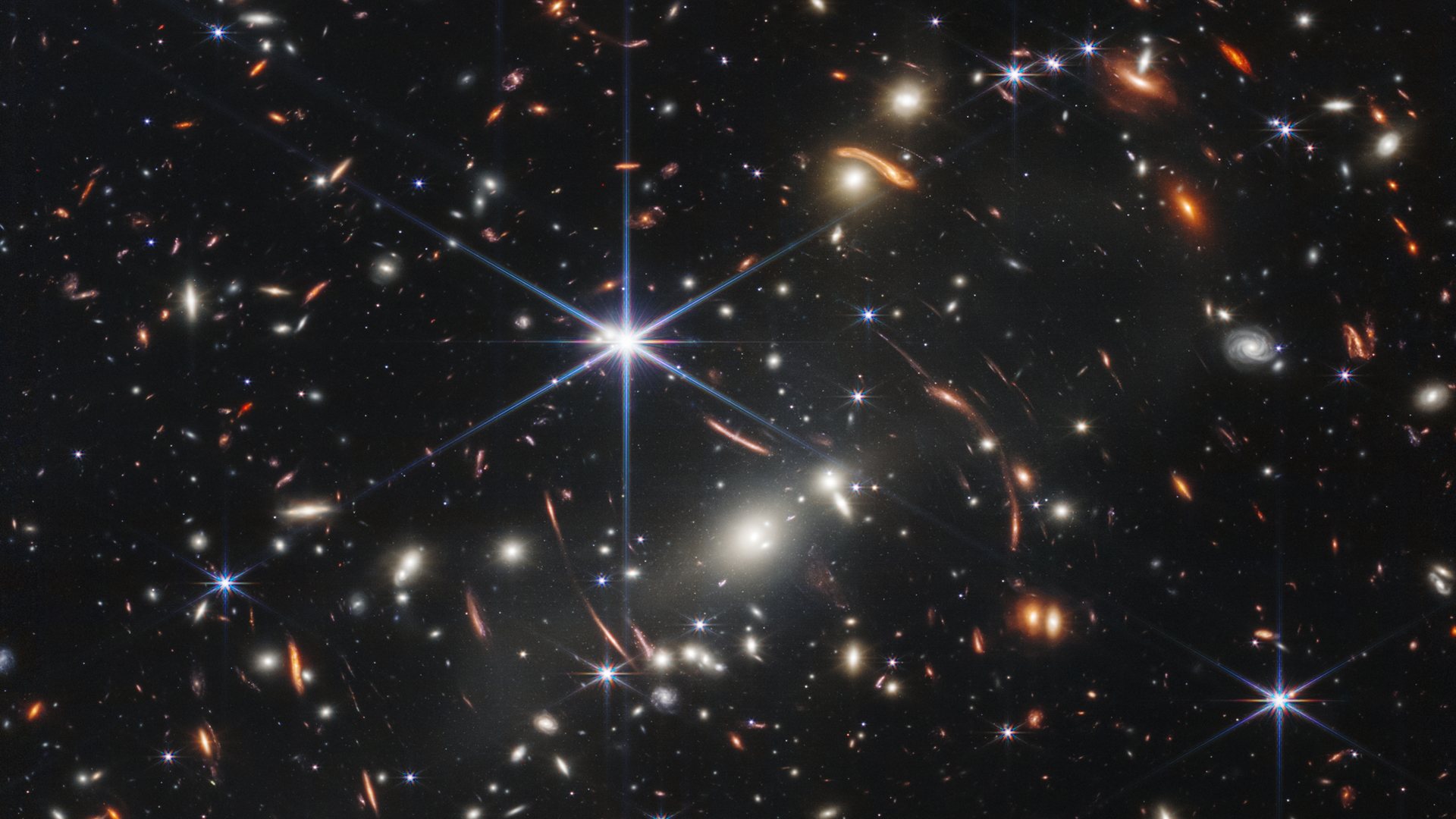'Delighted' Neil deGrasse Tyson Hails Gravitational Waves Find (Video)

NEW YORK — Neil deGrasse Tyson took the stage at Columbia University to speak after a historic result was revealed: the first direct detection of gravitational waves.
"I didn't know until like a half hour ago that I would be asked to give spontaneous remarks," the well-known physicist and science popularizer said. He then pulled some obviously prepared notes out of his coat: "— so let me see what my spontaneous remarks are." (You can watch Tyson's remarks here.)
But he quickly put the papers back in his pocket and set out to provide some historical context for the discovery and what it could mean — mentioning that we'd really ought to ask the researchers themselves for the details. He's used to asking the press, "have you interviewed the people who gave their lives to this first? […] Then you can come back to me, and I'd be happy to tie a bow on it. I'm delighted to actually be in the bow-tying service of science right here in New York City." [Gravitational Waves Detected by LIGO: Complete Coverage]
Like Tyson, most of the more than 350 people at Columbia had a good idea of the announcement's nature before it happened, drawn to the event by physics professors' prompting or the rumors over the past week that the elusive waves had been found (or, perhaps, by the sign promising "A Special Update from Columbia Physics"). Columbia University hosts several researchers in the global collaboration working on the detectors, and yesterday the collaborators finally got to reveal that they have measured impossibly tiny variations in timing caused by the merging of two black holes 1.3 billion years ago.
For the beginning of the program, two of those physicists, Zsuzsanna Marka and Imre Bartos, gave an overview of what gravitational waves are and the chief suspects for what might have caused disturbances in space-time that LIGO searches for. And then the room joined the official research announcement in Washington, D.C., by webcast — bursting into applause along with that room when the details were revealed: that waves had indeed been measured, and they were caused by the thunderclap collision of two black holes. Speakers in D.C. worked step by step through the measurements made by the two Laser Interferometer Gravitational-wave Observatory (LIGO) detectors.
Afterward, the researchers at Columbia invited Tyson on stage to share his views on the announcement, and he admitted he wasn't too surprised: "I'm delighted, as is everyone here," he said. "I was actually visiting the LIGO center in Livingston, Louisiana, just a month ago, and they were all quite hush about this. They were very smiley, though, I noticed."
Szabolcs Marka, another Columbia physicist and a principal investigator for LIGO, talked to the audience via Skype from D.C.: "The skies will never be the same," he said. "This is beyond my wildest dreams. I can tell you that during the last two decades, dealing with LIGO, dealing with people who did not believe we can make it happen, I imagined the day when we would discover [it]. And the last half-year, the last few months have been a torture for me because we knew we discovered gravitational waves but had to be sure before we shared our discovery with you.
Breaking space news, the latest updates on rocket launches, skywatching events and more!
"Today, you know that we not only proved that LIGO can see gravitational waves, that we can study the cosmos, but we also discovered the first binary black hole system," he added.
The two researchers at Columbia then opened up the floor for questions, clearly also eager to share the details of their work at last. They came prepared with fact sheets and graphs to project behind them about the waves they'd measured, as well as details about the black holes that caused those waves.
The researchers are already looking forward: Bartos mentioned that these results are merely the first detected, and might not even be the only gravitational waves hidden away in LIGO's data waiting to be described. Plus, new improvements, and additional detectors, will help LIGO see even smaller waves, and pinpoint where they come from more precisely, he said.
This isn't just the first direct detection of gravitational waves, the researchers pointed out, it's also the first detection of black holes at the instant they're merging. And the researchers are already using the data to find out more about where those black holes are located, how massive they are and the huge strength of the reaction when the objects merged (three suns' worth of energy was emitted in gravitational waves alone).
Tyson also discussed the result's implications, referencing a passage from the book "Cosmic Discovery," by Martin Harwit (The MIT Press, 1984). "The onset of new technologies, new detectors, creates abrupt leaps in the field, opens entire new branches of investigation — this is another such window to the universe that gets opened."
Email Sarah Lewin at slewin@space.com or follow her @SarahExplains. Follow us @Spacedotcom, Facebook and Google+. Original article on Space.com.
Join our Space Forums to keep talking space on the latest missions, night sky and more! And if you have a news tip, correction or comment, let us know at: community@space.com.

Sarah Lewin started writing for Space.com in June of 2015 as a Staff Writer and became Associate Editor in 2019 . Her work has been featured by Scientific American, IEEE Spectrum, Quanta Magazine, Wired, The Scientist, Science Friday and WGBH's Inside NOVA. Sarah has an MA from NYU's Science, Health and Environmental Reporting Program and an AB in mathematics from Brown University. When not writing, reading or thinking about space, Sarah enjoys musical theatre and mathematical papercraft. She is currently Assistant News Editor at Scientific American. You can follow her on Twitter @SarahExplains.
